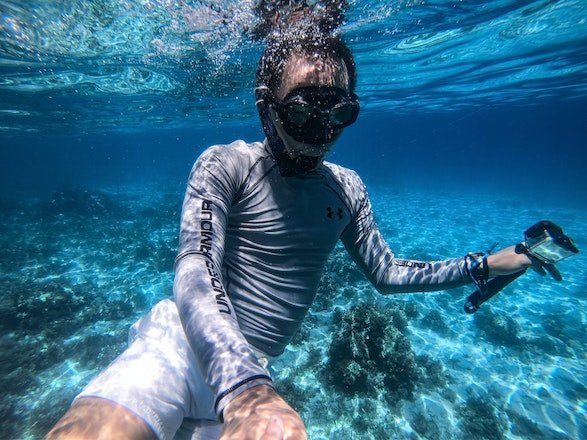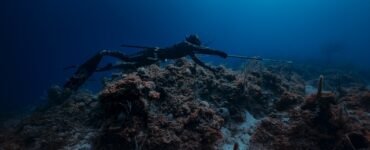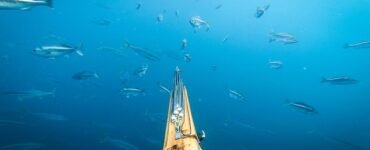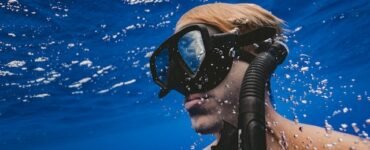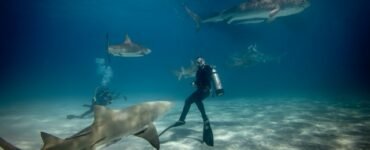When it comes to spearfishing understanding and reading underwater conditions is essential for a safe and successful diving experience. Being aware of factors such as visibility currents and tides allows you to plan your dives effectively choose suitable locations and maximize your chances of a fruitful catch. In this article we will explore how to read and interpret these underwater conditions to enhance your spearfishing adventures.
1. Visibility
Visibility refers to the clarity and transparency of the water which can vary greatly depending on location weather and other environmental factors. Good visibility is crucial for spearfishing as it enables you to spot fish and navigate underwater terrain effectively. Here are some key aspects to consider when assessing visibility:
- Water Clarity: Clear waters with minimal suspended particles provide better visibility compared to murky or turbid waters. Factors such as rainfall currents and nearby human activities can affect water clarity.
- Light Conditions: Adequate natural or artificial light is necessary for good visibility underwater. Bright sunlight clear skies and calm surface conditions contribute to better lighting while overcast days or low-light conditions may reduce visibility.
Monitoring and understanding visibility conditions before diving will help you choose the right locations and adapt your spearfishing techniques accordingly.
2. Currents
Currents are the continuous movements of water in a particular direction and can greatly influence your diving experience. Understanding the nature and strength of currents is crucial for safety and efficient navigation. Here’s what you should know about currents:
- Types of Currents: There are different types of currents including tidal currents longshore currents and upwelling currents. Each type has its characteristics and can affect underwater conditions differently.
- Strength and Speed: Currents can range from gentle and slow-moving to fast and powerful. Assessing the speed and strength of currents is essential for determining the energy required for diving and planning your approach.
- Current Patterns: Currents can have predictable patterns such as changing direction with tides or following specific underwater topography. Studying local current patterns will help you anticipate and adapt to changing conditions.
Be cautious when diving in strong currents as they can affect your ability to maintain position navigate and return to the surface safely. Consider seeking guidance from local experts and experienced divers who are familiar with the specific current conditions of your diving location.
3. Tides
Tides are the regular rise and fall of sea levels caused by gravitational forces exerted by the moon and the sun. Understanding tides is crucial for planning your dives especially in coastal areas. Here’s what you need to know about tides:
- High Tide and Low Tide: Tides occur in cycles of high tide and low tide. High tide is when water levels are at their highest while low tide is when water levels are at their lowest. These cycles can significantly impact underwater conditions.
- Currents and Tides: Tidal movements often create currents which can affect visibility water movement and fish behavior. Learning how tides interact with currents will help you anticipate potential changes in underwater conditions.
By consulting tide charts and understanding the tidal patterns of your diving location you can plan your dives to coincide with optimal tidal conditions. This can enhance visibility and increase your chances of encountering fish in their preferred feeding areas.
4. Local Knowledge and Experience
Local knowledge plays a significant role in understanding and interpreting underwater conditions. Diving conditions can vary greatly from one location to another even within the same region. Seek guidance from local divers fishing communities or dive shops who have first-hand experience and insights about the underwater conditions in your target area. They can provide valuable information about visibility currents and tides specific to your diving location.
5. Safety Precautions
When diving in unfamiliar or challenging conditions always prioritize safety. Here are some safety precautions to keep in mind:
- Buddy System: Always dive with a buddy or in a group. This ensures mutual support and assistance in case of emergencies or challenging conditions.
- Check Weather Forecasts: Stay updated on weather forecasts to avoid diving in unfavorable conditions such as strong winds storms or poor visibility caused by heavy rainfall.
- Practice Proper Buoyancy Control: Maintaining proper buoyancy control is essential especially in currents. Being able to adjust your depth and control your movement helps conserve energy and improves safety.
Conclusion
Reading underwater conditions is an essential skill for spearfishing. By understanding visibility currents and tides you can make informed decisions about dive locations adjust your spearfishing techniques and enhance your overall diving experience. Remember to prioritize safety seek local knowledge and stay adaptable to changing conditions. With practice and experience you will become more proficient at interpreting underwater conditions and maximizing your spearfishing success.
FAQs
1. Can poor visibility affect spearfishing success?
Yes poor visibility can make it challenging to spot fish and navigate underwater. It may decrease your chances of encountering your desired targets. It is generally more productive to dive in waters with good visibility.
2. How can I prepare for diving in strong currents?
Preparing for diving in strong currents involves understanding the strength and direction of the currents practicing proper buoyancy control and seeking guidance from experienced divers or local experts. It is advisable to gain experience in calmer conditions before attempting dives in stronger currents.
3. Are tides the same in all locations?
Tides can vary between locations due to factors such as geographical features coastal shape and the position of the moon and sun. It is important to consult local tide charts and obtain information specific to your diving location.
4. Can I rely solely on my own assessment of underwater conditions?
While personal assessment is valuable seeking local knowledge and guidance from experienced divers adds an extra layer of safety and accuracy. They can provide insights into the specific underwater conditions of your target area and offer advice based on their experience.
5. What should I do if I encounter unexpected changes in underwater conditions?
If you encounter unexpected changes in underwater conditions prioritize safety. Stay calm assess the situation and communicate with your dive buddy or group. If conditions become unsafe or unmanageable consider aborting the dive and resurfacing.

Explore the mesmerizing world of spearfishing on our blog! Discover tips, techniques, and breathtaking underwater stories from passionate spearfishers. Dive in for an ocean of adventure.

